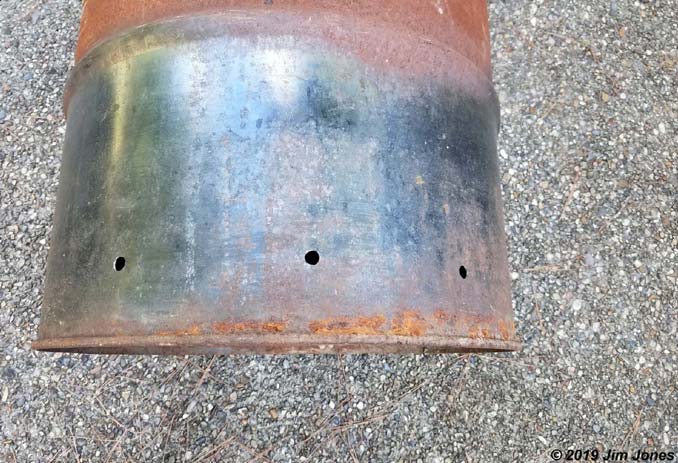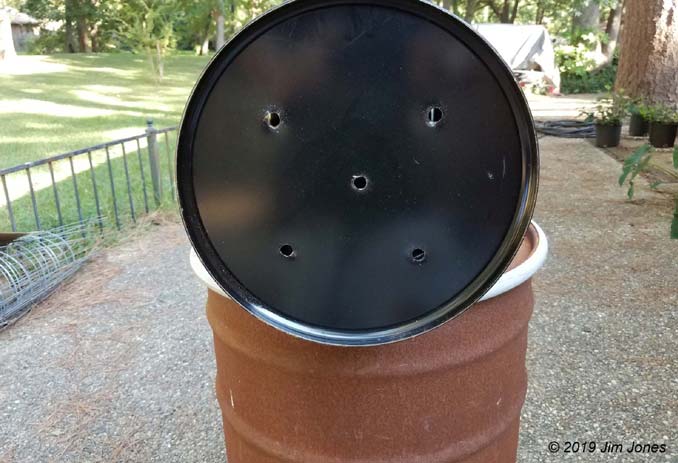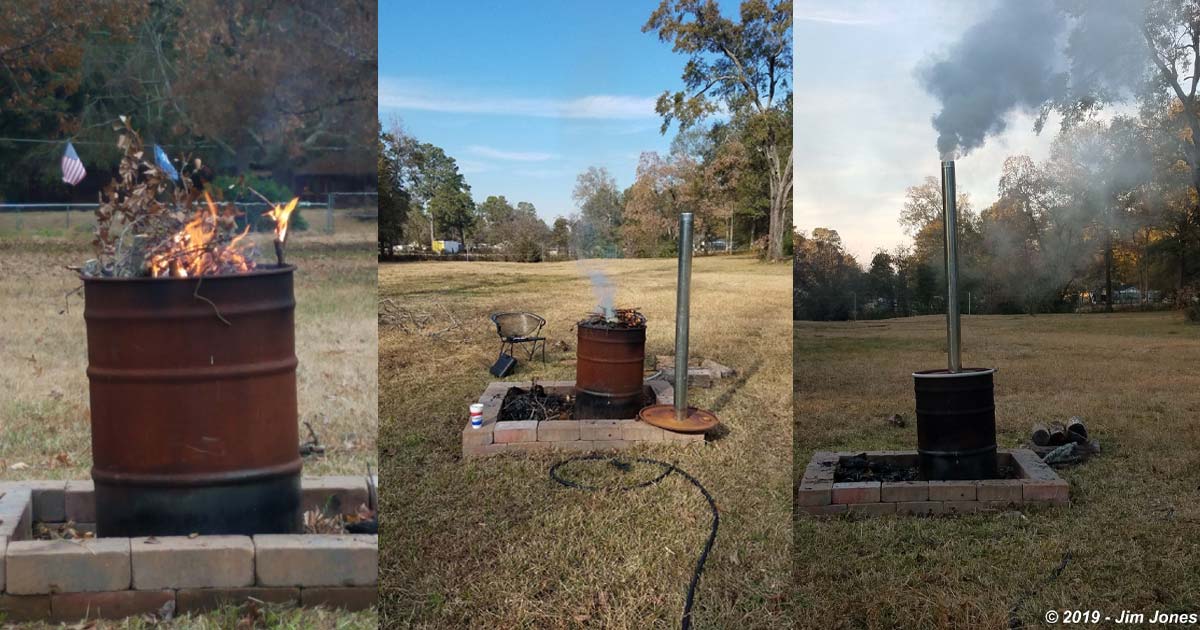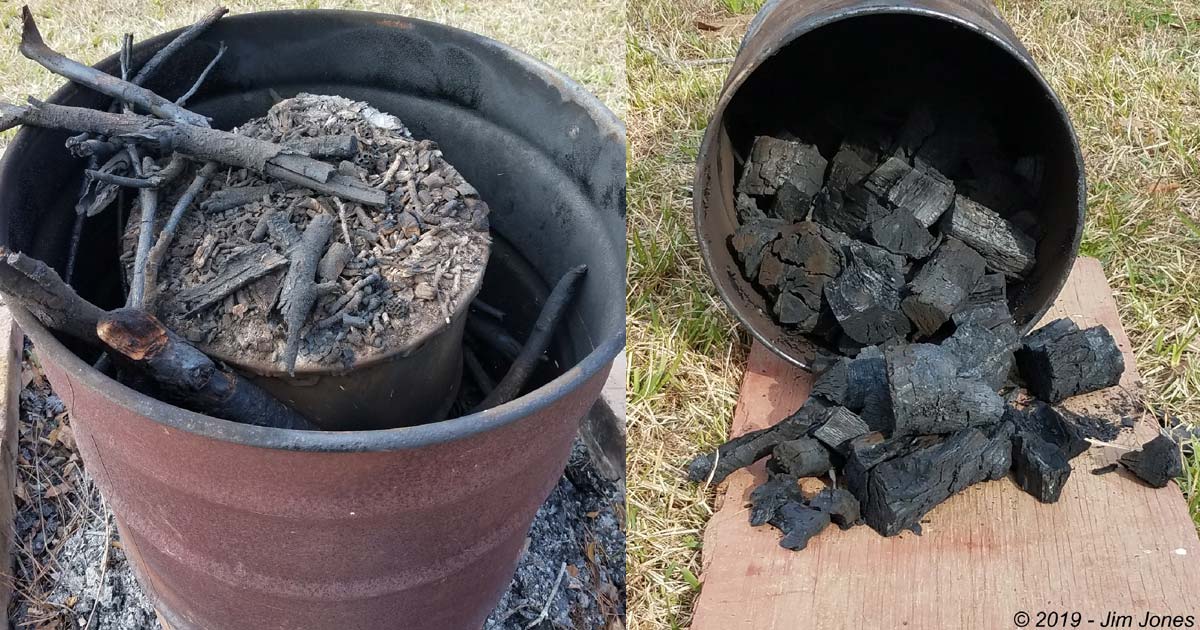If you grill or smoke foods outside a lot you know the cost of charcoal is high. Fortunately for us we have numerous Oak and Hickory trees in the private park behind our suburban home and several more old Oaks at the farm. We got tired of spending several hundred dollars a year on store bought charcoal at $19-$20 for a 12-22 lb. bag. Coupled with the fact I have seen pieces of paneling in briquettes (and lumber in Harwood Lump Charcoal) of a major brand, we decided to research and make our own.
When we decided on a method I only had to purchase the small drum and the section of stove pipe totaling approximately $30. After making the first batch we had around 20 lbs. of hardwood Lump Charcoal. We would be saving money after the third batch and were sure what was cooking our foods. Now when we gather and sit at the fire pit we usually make a batch of charcoal for later use.
After researching I decided to use a two drum kiln method. We already owned a sealable 55-gallon drum used to burn shredded paperwork and mail so we only had to purchase a 35-gallon drum at a nearby oil company and a piece of 5’ stove pipe. A series of ½” holes were drilled evenly spaced around the bottom of the 55-gallon drum. Five ½” holes were drilled in the bottom of the 35-gallon drum.



A pilot hole is drilled in the center of the lid to the 55-gallon drum. The hole is used to cut a 4” square. A length of 5’ stove pipe is connected to the lid. The drums were taken to the farm and placed in the fire pit for safety purposes. Three bricks were placed in the bottom of the 55-gallon drum at 120° intervals. The smaller drum was set on the bricks taking care to not block the holes in the bottom. The small drum is filled with oak, hickory, pecan, or other smoking wood and sealed.

Sticks, twigs, lumber, etc. is placed around the inside of the large drum and on the top of the smaller drum until the drum s full. The debris is lit on fire and allowed to burn. As the pile on top burns down it is re-stoked 3-4 times (approx. 2 ½ hours). The debris around the inside of the large drum burns down and may have to re-stoked before the drum is sealed. Once the fire is burning down the sides of the large drum it is sealed and allowed to continue its burn. As the burn continues, the wood inside the inner drum will begin to burn without igniting in a process called gasification. The 5 1/2“ holes in the bottom of the smaller drum allow the gases cooking out of the wood to burn off. As the wood cooks, the smoke will decrease and a light blue flame may be seen at the top of the stove pipe. Approximately 1 hour after the smoke stops, a metal coffee can is placed over the top of the pipe. Dirt is shoveled around the bottom of the larger drum to cover all the evenly spaced holes. This allows the air flow to be severely limited and let the fire use all the fuel inside the drums and burn out.
As the fire burns down the side of the drum and the inner barrel heats, it cooks the gas and water out of the wood inside without an open flame, leaving charcoal as a result.

Wait at least 16-24 hours when the drum is cool to the touch before opening them due to the now charcoal inside the inner drum may ignite and burn up if not cool. The charcoal debris remaining inside the larger drum should not be used for cooking unless it is all oak, hickory, pecan, or other smoking woods. We use this charcoal debris for starting fires to burn small stumps on the farm or for starting fires in the fire pit. The small charcoal debris remaining in the small drum will be made into a slurry then formed into briquettes in a future article and video.

To aid in knowing how the fire is burning down around the smaller drum, I make at least three vertical lines down the outside of the larger drum with either white chalk or spray paint before the fire is lit. As the lines darken (and burn off) I see how evenly the fire is burning down the sides of the drum.
It is important to remember when making your own hardwood lump charcoal is to use dried wood. Working with two almost sealed containers, never use any type of petroleum or other chemical fire starter methods. If they are used it is very possible the fumes can enter the smaller drum via the vent holes in the bottom and fiercely ignite or explode when the fire is being started inside the larger drum causing injury, death, or property damage. We place our charcoal kiln inside the fire pit to minimize fire escaping into the yards. A water hose is kept close by for emergencies.




great method I have seen that makes sense exited to give it a go I have the barrels and wood. Does it make sense to use better quality wood in the 55 salon or doesn’t it matter
I like oak and hickory for charcoal for cooking.